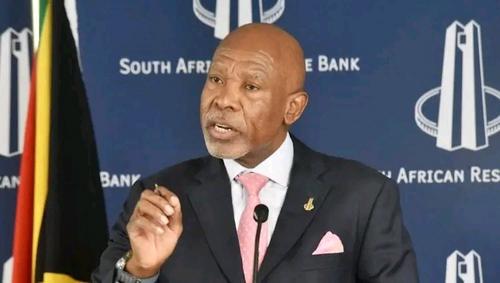Business
What to Expect from South Africa’s Interest Rate Decision Next Week

Next week, all eyes will be on the South African Reserve Bank (SARB) as its Monetary Policy Committee (MPC) convenes to decide whether to keep interest rates steady or lower them. The debate is heating up, with economists split between expecting a hold and anticipating a possible rate cut.
Hold or Cut? The Debate Among Experts
Most analysts believe the SARB will choose caution and keep rates unchanged for now. However, some economists are becoming more vocal about the potential for a modest cut, especially given recent inflation trends.
The Bureau for Economic Research (BER) highlights three perspectives: what SARB could do, what it should do, and what it will probably do — noting these may not always align. While there’s a solid argument for easing rates, the SARB has tended to play it safe in recent meetings.
Why the Cautious Approach?
The Reserve Bank froze rates at its March meeting due to global uncertainty, particularly sparked by the US tariff wars under former President Donald Trump. Though those trade tensions unsettled markets at first, a 90-day tariff pause has helped calm things down — opening the door for more stable economic conditions.
Looking globally, several central banks, including the Bank of England, European Central Bank, and Australia’s Reserve Bank, have cut interest rates recently to stimulate growth amid global uncertainties. The BER notes that South Africa’s SARB might follow suit, as forward markets are pricing in a 25 basis point cut as a possibility.
What Are Economists Saying?
Most local economists expect a rate hold in May, with the potential for cuts starting in July as the effects of global trade pauses become clearer. International experts are more optimistic about earlier cuts to align South Africa with global monetary easing.
| Economist | Expectation |
|---|---|
| Nedbank | Hold |
| Investec | Hold |
| Citadel Investments | Hold |
| Bureau for Economic Research | Hold |
| Bank of America | Cut |
The Wildcard: Inflation Target Changes
A major factor that could influence SARB’s decision is the possible change to South Africa’s inflation target. SARB Governor Lesetja Kganyago has advocated lowering the target to around 3%, bringing South Africa closer to global standards.
Deputy Finance Minister David Masondo confirmed ongoing discussions between Treasury and the Reserve Bank about adjusting the inflation target to a narrower 3%-5% band. No official announcement has been made yet, but this could be revealed in next week’s MPC briefing.
What Would a Lower Inflation Target Mean?
A stricter inflation target might mean SARB takes a slower, more cautious approach to rate changes. Bianca Botes, director at Citadel Global, explains that while a lower target could benefit the economy overall, it may also slow salary growth and keep consumer prices in check.
Interest rates could remain steady for longer periods, as SARB balances inflation control with supporting economic growth and employment.
However, the tighter target comes with risks — it could limit flexibility needed during economic shocks and might restrict investments in infrastructure and broader economic activity if applied too rigidly.
As SARB’s MPC meets next week, the main question is whether the central bank will keep rates steady or cautiously cut them to support growth. While many expect a hold, the global environment and inflation data leave the door open for change.
Any adjustments to the inflation target will add another layer of complexity, potentially leading to a more measured approach to future rate moves. South Africans can expect clear communication from SARB soon, as these decisions will impact borrowing costs, investments, and everyday expenses.
{Source: BusinessTech}
Follow Joburg ETC on Facebook, Twitter , TikTok and Instagram
For more News in Johannesburg, visit joburgetc.com



























